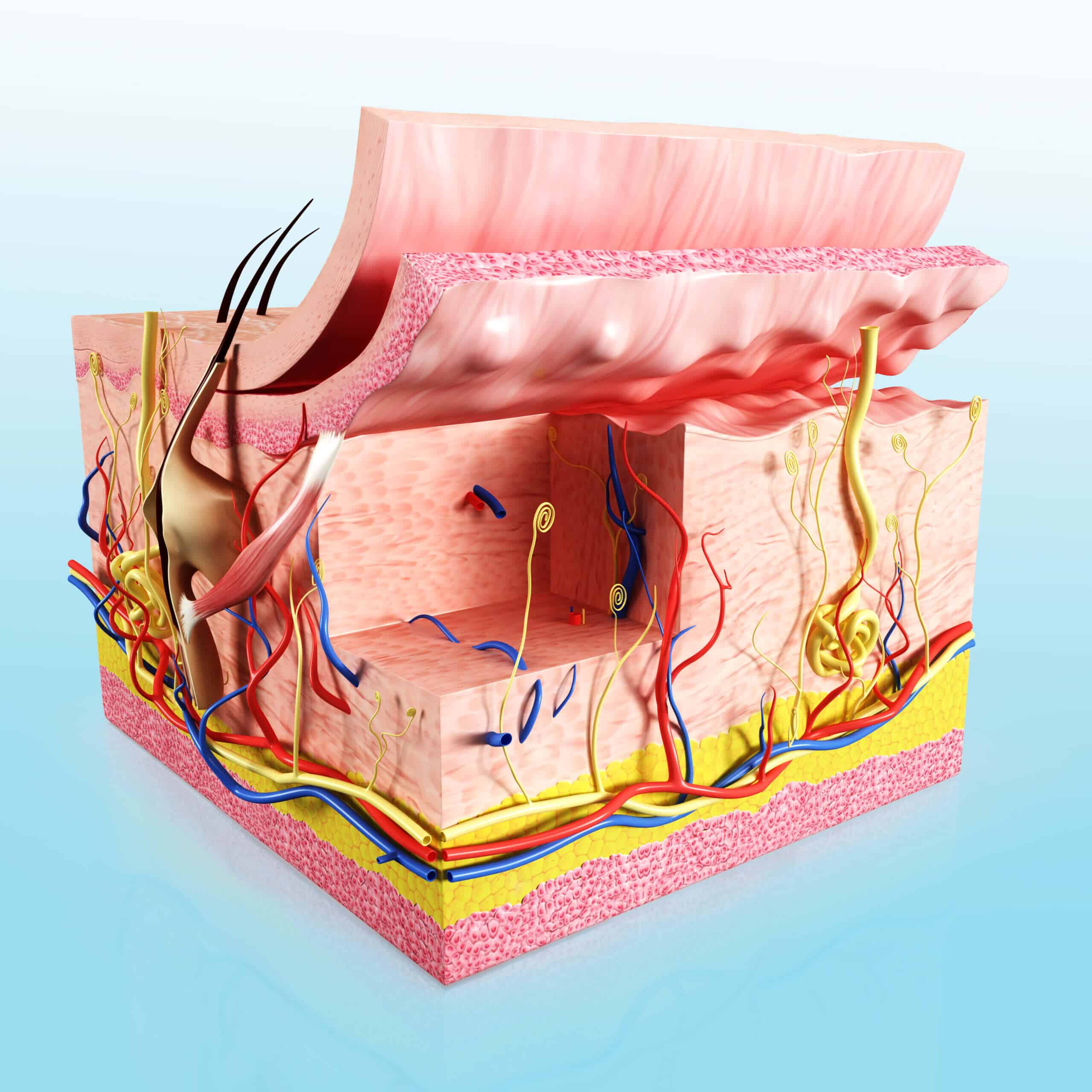Imagine being able to attach anything to your skin without needing glue - a bio-sensor, a watch, a communication device, a fashion accessory - the possibilities are endless. This is exactly what researchers in the field were able to provide us

[Translation by Dr. Moshe Nachmani]
This discovery is based on research by scientists from Binghamton University and the State University of New York, a study recently published in the journal ScienceBiomaterials Minutes . The research explains why the human skin controls the formation of cracks in the skin and why tensometers provide inaccurate results when measuring the mechanical properties of biological tissues. During the research, the scientists also developed a method for attaching rubber-like polymeric materials to human skin without the need for glue. The method, originally used to make the experiments simpler, became a significant discovery in itself. A patent application designed to protect the intellectual property of the innovative method has already been submitted, and the researchers claim that it could lead to a breakthrough in the field of biotech. "I didn't know we would reach this finding, but this is often the way science works," says the lead researcher. "In the beginning, we thought to ourselves if we could use normal measurement methods to examine the mechanical properties of tissues, especially skin tissue, and whether the results are indeed reliable," said the lead researcher. "No one has ever verified these measurements for skin tissue."
'Hooke's law', developed by the seventeenth century British physicist Robert Hooke, states that: "A force acting on a spring causes a displacement relative to the force and relative to the spring constant". More broadly, researchers use this law to measure the stiffness of various materials, as well as the amount of energy required to cause them to break. Explains the main researcher: "I reflected on the fact that in the new era it is possible to measure the hardness of metal and ceramic materials. However, what about measuring the hardness of skin? Metals and ceramic materials have a composition that is largely uniform, but skin and other human tissues have a complex and heterogeneous structure that includes microscopic cells joined together by cell-cell junctions. The outer layer of the skin also has a complex structure that includes microchannels."
Using micro channels in the skin
The researchers attached the skin samples to a piece of polydimethylsiloxane (PDMS), a rubber-like polymeric material used mainly in devices from the fields of bioengineering and biomedicine. After that, the researchers stretched the skin samples together with the material on it. In the next step, the researchers used a microscope to quantify the changes in the mechanical load that the skin could bear on itself. "While the skin is lengthening, a small crack should form in it, and we can measure the amount of energy required for this as a function of a certain length," explains the lead researcher. "Normally, in order to measure the amount of energy required to create a crack in the field of mechanical engineering, all you have to do is place the material between two grips, pull them and create a crack. In this way it is possible to measure the force and the degree of elongation and in fact the amount of energy required. However, this method assumes that the material being measured is uniform - that is, the composition is constant in all parts of the material. However, we found that the cracks formed on the outer layer of the skin are formed in a very, very strange way." The cracks were formed along the microchannels and continued along the entire length of the crack, thereby increasing the energy required to break the tissue. This discovery can be extended to explain the behavior of other human tissues.
"Due to the heterogeneous structure of the skin, this also means that the cracking path becomes much more random. This is the reason why the researchers received great variation in the results of the measurements conducted so far in the skin", explains the main researcher. "Even if you take the skin sample from the exact same source and at the same age, you will get such a high variation between sample and sample because the paths of cracking are different."
More of the topic in Hayadan:
